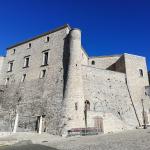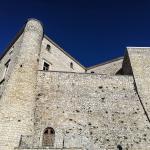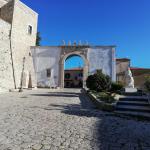The Della Leonessa Castle is a site of historical interest in the old centre of Montemiletto, Irpinia.
Standing on a rocky ridge overlooking the surrounding landscape and the valley crossed by the Calore and Sabato rivers, this hill fort is thought to have Lombard origins. It was probably built between the 8th and 10th centuries on the ruins of a pre-existing Roman construction, of which the remains of a brick wall can still be seen.
It was restored in the 12th century during the Norman period, and owned by various families including the Della Leonessa dynasty who gave their name to the building. The Castle was seriously damaged in 1419 following an assault by Algiasio De Tocco, whose family owned the building until 1806 when it was converted into a noble residence during the late Renaissance period in the 16th century.
Although the Castle’s function has changed over the years, some of its ancient defence structures have been preserved, including the corner towers whose merlons remained in place until the 19th century.
Della Leonessa Castle is accessible via the majestic Porta della Terra (Gate of the Land) at the back of the building. On the arch leading to the Castle, the coat of arms of the Tocco family can still be seen on the inside, facing towards the courtyard. It depicts a shield surmounted by a nine-point crown. There are a number of bedchambers and functional rooms inside the Castle, which add mystery and intrigue to the atmosphere of this fortress and its village.
As a symbol of the local community, the Della Leonessa Castle is noted for having twice hosted Charles III of Bourbon, King of Naples and Sicily until 1759 – the year in which he was crowned sovereign of Spain, a title he held until his death on 14 December 1788. This makes the Castle a site of great historic interest, but it is also one of the best-preserved fortresses in the province of Avellino.
To complete
Castello della Leonessa
Piazza Umberto I, 83038, Montemiletto AV, Italia
Did you like it? Leave a review
Your opinion is important! It will be visible after approval by the editorial staff.
To post a comment you must be an authenticated user. Log in with Social Login




